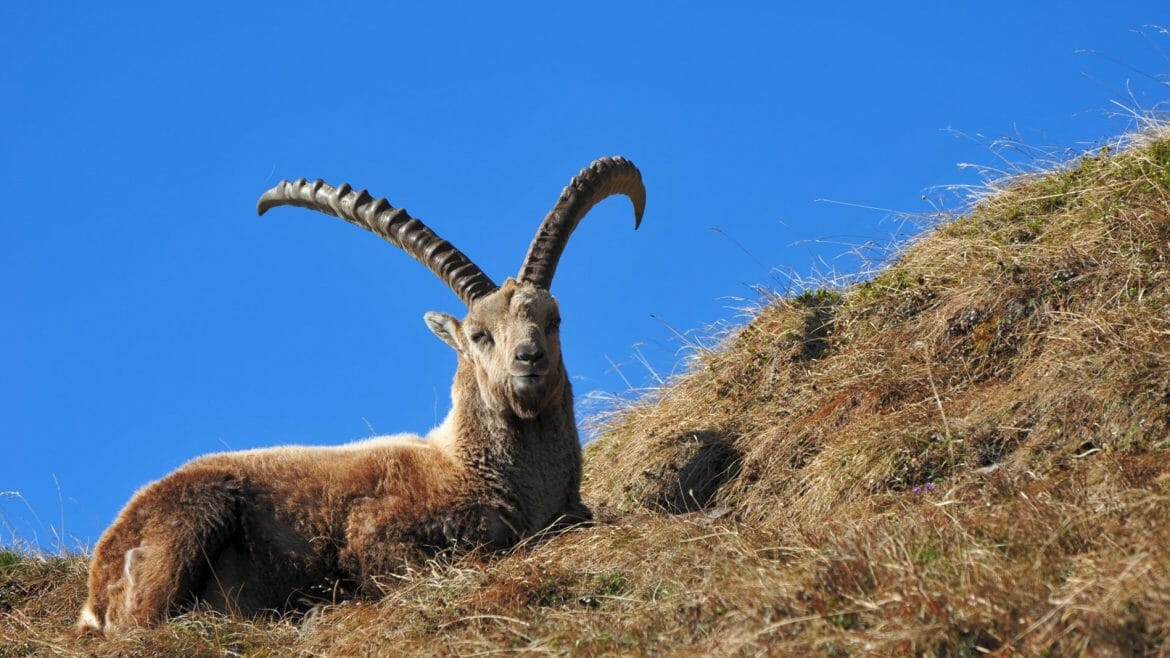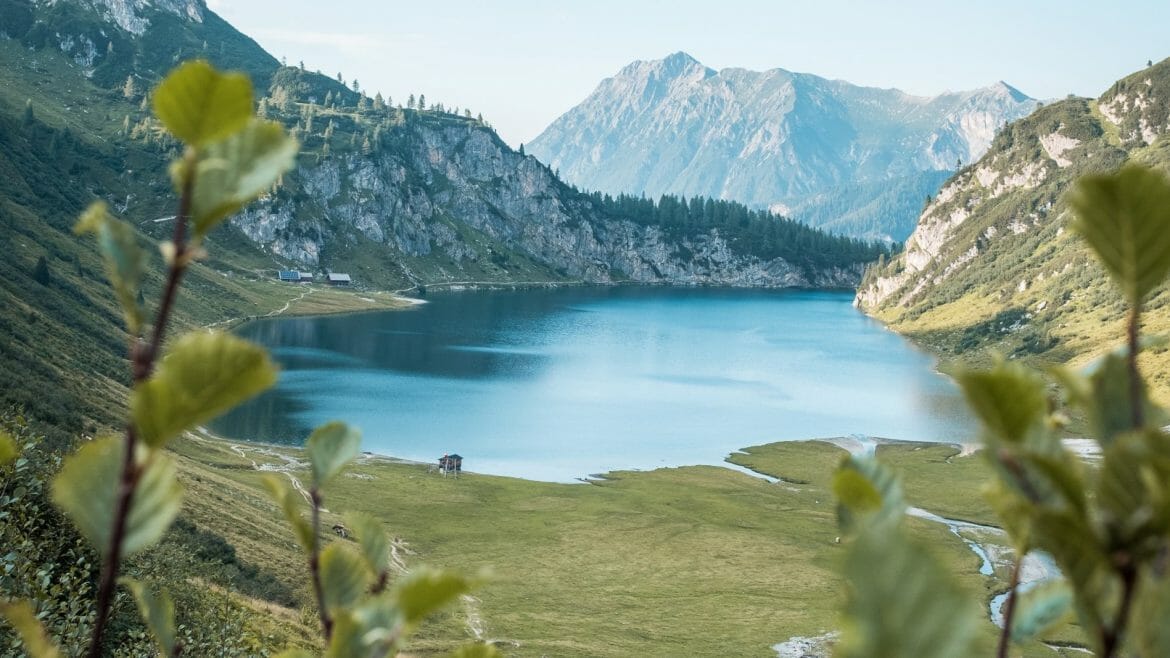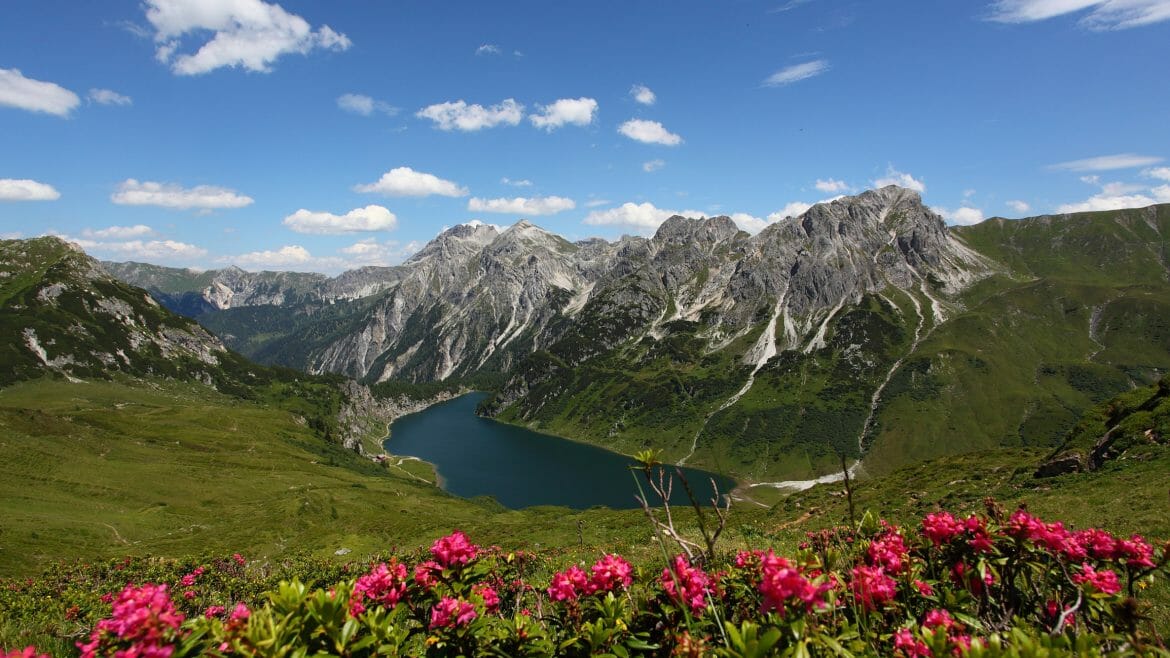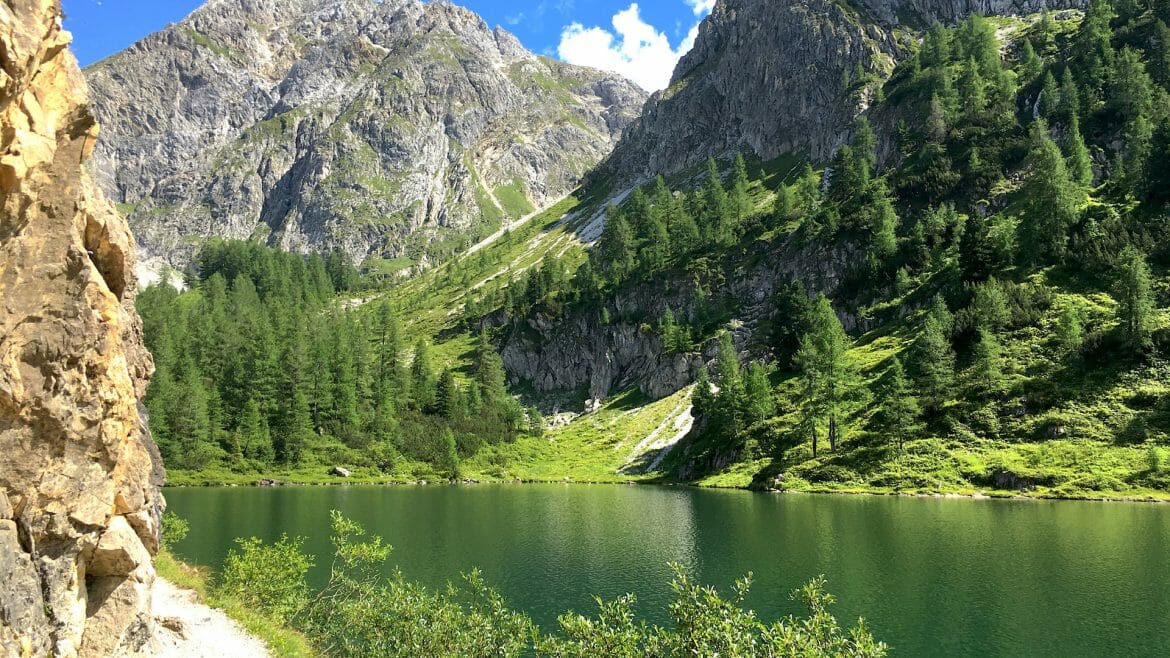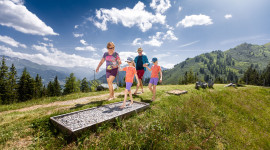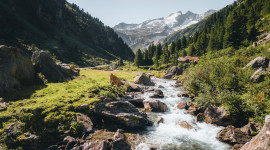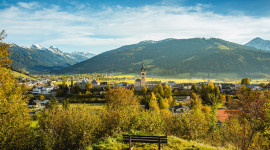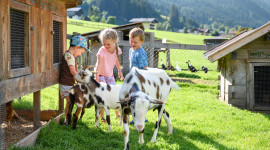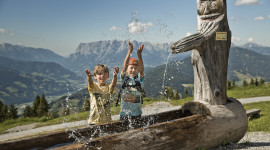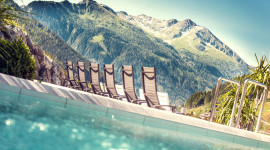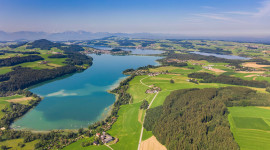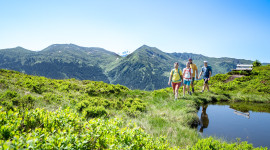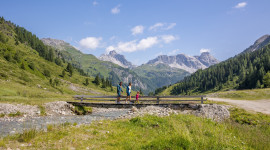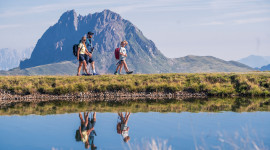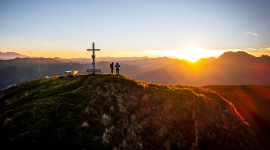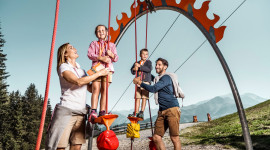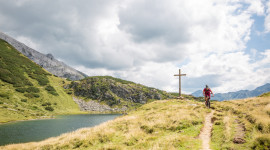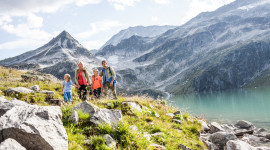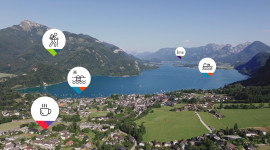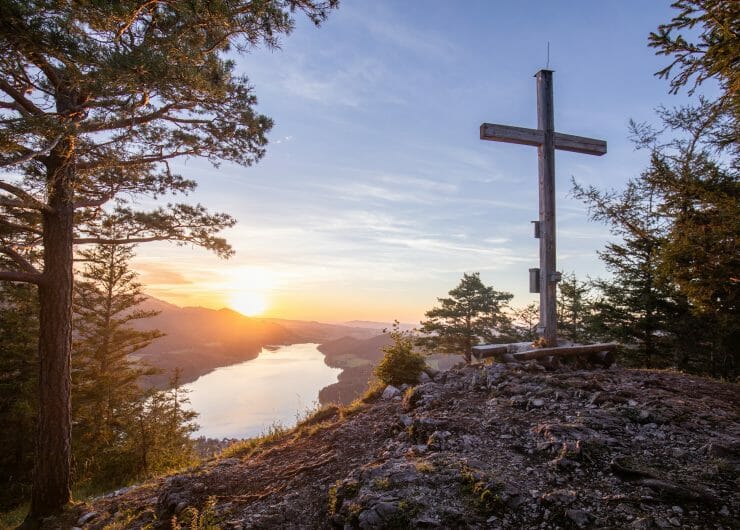
#1 The Big 5 of the Alps in the Hohe Tauern National Park
They are some of the largest and most impressive masters of the art of living in the high mountains. The marmot, ibex, golden eagle, bearded vulture and chamois are known as the “Big 5 of the Alps”. All of them have found a protected habitat in the Hohe Tauern National Park, the largest conservation area in Central Europe. Where can they be discovered? One hot tip is on the Großglockner High Alpine Road. You can recognise marmots by their loud whistle. It’s worth looking up if a stone comes loose somewhere. Who knows, there could well be a chamois or ibex balancing on a rock face somewhere. The vultures, on the other hand, live in the Rauris Krumltal Valley. Just like the golden eagle, however, they can be seen circling around the entire National Park area.
#2 Discovery tour in the world’s largest water-bearing multiple-entrance cave
According to legend, a precious treasure is stored in Lamprecht’s Cave. Nobody has as yet managed to find it, and this could also have something to do with the fact that it was washed away long ago. This is because Lamprecht’s Cave is the largest water-bearing multiple-entrance cave in the world. After heavy rainfall, the cave rivers can swell up so quickly that there’s an early warning system in place for the visitors. Fortunately, this happens only rarely, making a visit to Lamprecht’s Cave is a refreshing and safe experience. The small show area of the cave can be explored in a good 90 minutes. The gigantic, vast cave system that stretches out over 50 kilometres is reserved for researchers.
Lamprecht’s Cave Saalachtal © Achim Meurer
#3 Aim at the water to hit the target on Prebersee Lake
Every year in late summer at Prebersee Lake in the Salzburg Lungau holiday region, the Preber Shoot takes place. It is a fascinating traditional event made possible only because of an unusual feature about Prebersee Lake’s water. There are so many floating particles in the moor lake that instead of the projectiles hitting the surface of the water, they ricochet off. This means that marksmen don’t shoot at the target, but rather at the lake. With a bit of luck, the bullets then end up hitting the target on the opposite bank of the river. The phenomenon is so spectacular and unique that even Walt Disney was interested in it and had the Preber Shoot filmed.
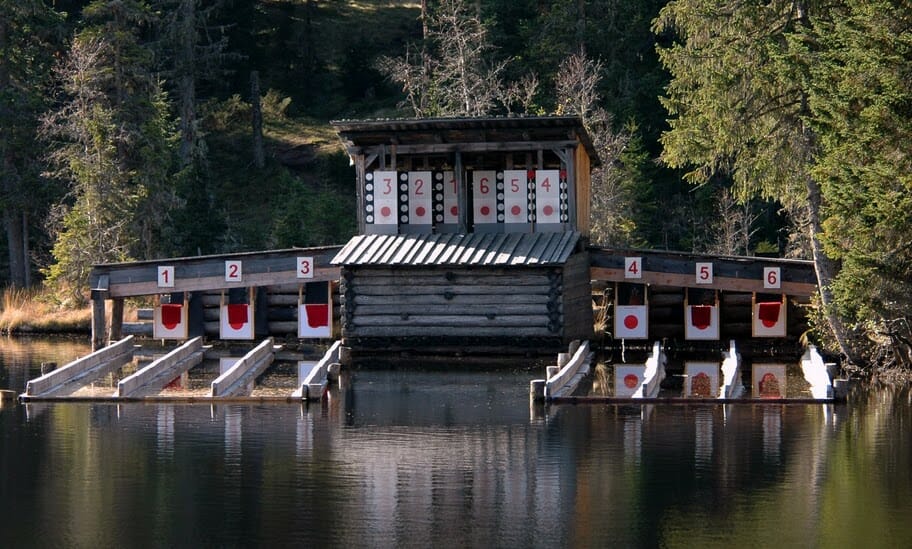
© Ferienregion Lungau – Targets at the world-famous Preber Shoot
#4 The oldest restaurant in the world can be found in the middle of Salzburg Old Town
Alcuin von York is considered of the most important advisers to Charlemagne, who resided in the Prince-Archbishopric of Salzburg in 803. On this occasion, the grand guest seemed to have been greatly impressed by the culinary delights. Alcuin, who was in the Emperor’s entourage, immortalised one establishment in his records: the St. Peter Stiftskulinarium. Since then, guests have enjoyed fine dining here in the heart of the UNESCO World Heritage City. Goethe is said to have been there, as has Mozart, as well as a list of prominent and lesser-known guests.
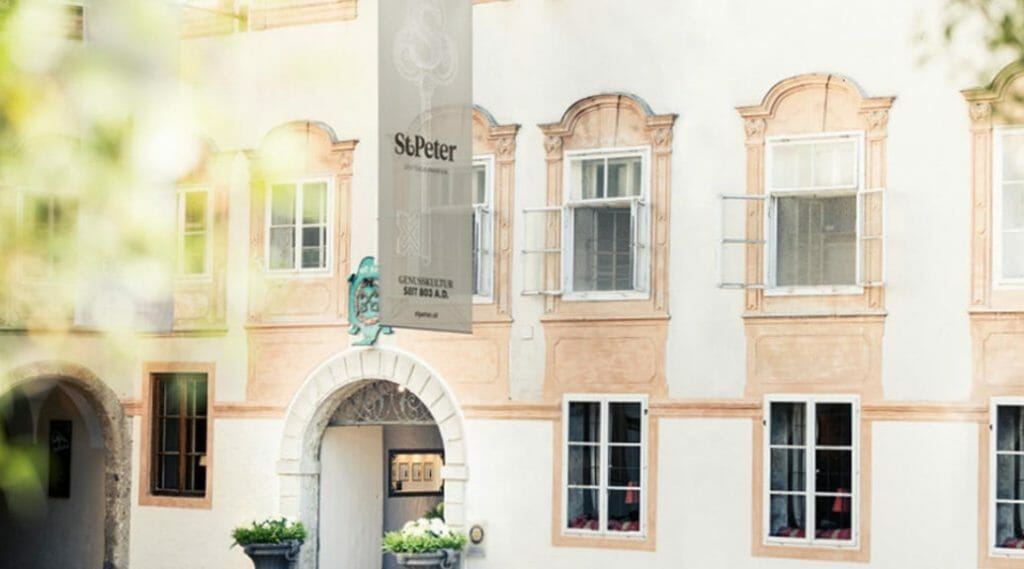
St. Peter Stiftskulinarium @ Marcus Rieder
#5 The tallest trees in Austria grow in the Lammertal Virgin Forest
At 47 metres in height, the “Lammertal Watchman” is higher than the Andräkirche church in the city of Salzburg. Not far away is the “Old Tax“, a spruce that is more than 300 years old with a trunk circumference of more than five metres. It’s a real exception for fir trees, beeches and spruces to grow that old and powerful. What has benefitted these trees for centuries has been their remote location. They thrive in their position high over Lammertal Valley in a sloping forest that can never be used for forestry purposes. This is incredibly fortunate, as a beautiful corner of the earth has been created with the Lammertal Virgin Forest, and it’s a fantastic place for the whole family to visit.
#6 A greedy lindworm guards the largest mountain lake in the Eastern Alps
The Tappenkarsee Lake, which is steeped in legend, nestles in the Lower Tauern mountains at an altitude of 1,762 metres above sea level. A hike from Jägersee Lake in Kleinarl to the largest mountain lake in the Eastern Alps, which is a good 50 metres deep, lasts around 2.5 hours. Legend has it that a voracious lindworm lives on its bottom and devours everything that ventures near the shore of the lake. Caution is required if you want to stick your big toe into the icy water. Who knows what will climb out of the depths of the water!
#7 “Lungauer Tauernroggen” is a valuable type of ancient rye.
Ancient rye is the next big thing! What good fortune, then, that more than 15 years ago a number of farming families from Salzburg’s Lungau region decided to resurrect the “Lungau Tauerneroggen” rye, and began growing it organically. These are the Hötzer (Trimmingerhof farmstead); Naynar (Hiasnhof farm); Löcker (Biohof Sauschneider organic farm); and Prodinger (Suppangut farm) families. The ancient variety of rye is particularly robust and thrives at an altitude above 1,000 metres. Today it is particularly prized for its valuable components and better tolerance. Want to know where the rye and products made from it can be bought? One of the places is the “Kemmts eina” speciality shop in Tamsweg.

© Michael Grössinger – The rye comes to the mill fresh from the field
#8 Austria’s steepest cog railway has been running for almost 130 years
Since opening on 1st August 1893, the Schafbergbahn cog railway has been reliably transporting visitors up the Schafberg Mountain high above Lake Wolfgangsee. Austria’s steepest cog railway conquers around 1,200 vertical metres in approximately 35 minutes. Once at the top, truly incredibly 360-degree panoramic views are opened up that stretch over from the Höllengebirge mountains to the Dachstein Gleicer and as far as to the Hochkönig massif and the Watzmann. When visibility is good, you can even make out the Hohe Tauern mountains with Austria’s highest mountain, the 3,798-metre Grossglockner. In addition, there are literally eleven lakes at your feet.
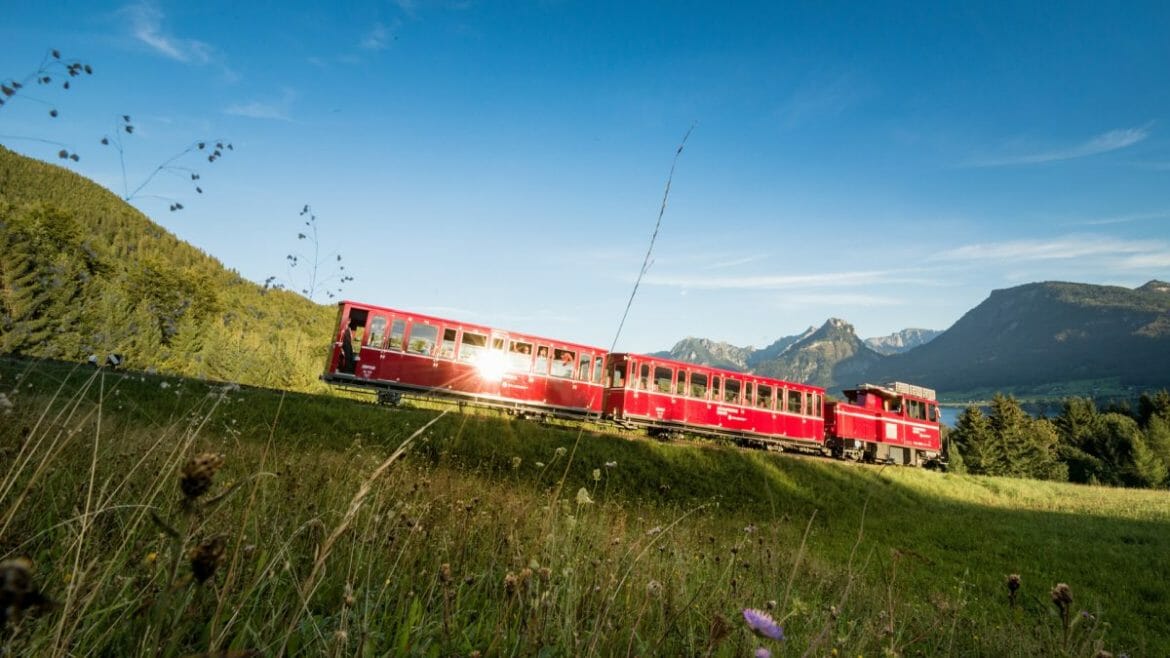
© Salzburg AG – SchafbergBahn
#9 The Postalm is Austria’s largest mountain pasture area
Stretching out over 42 square kilometres, the Postalm is Austria’s largest Alpine pasture area. The pastures were created as a by-product of salt production in neighbouring Salzkammergut. Wood was needed to fire up the brewing pans in the surrounding saltworks, and as a result numerous forests were cleared. From the middle of the 19th century, the post horses were then allowed to graze on the high-lying meadows. This is where the name comes from. Today the Postalm connects Tennengau and Flachgau, and can be reached via the Lammertal valley and Strobl. Once at the top, day-trippers will find themselves in a glorious high-altitude walking area.
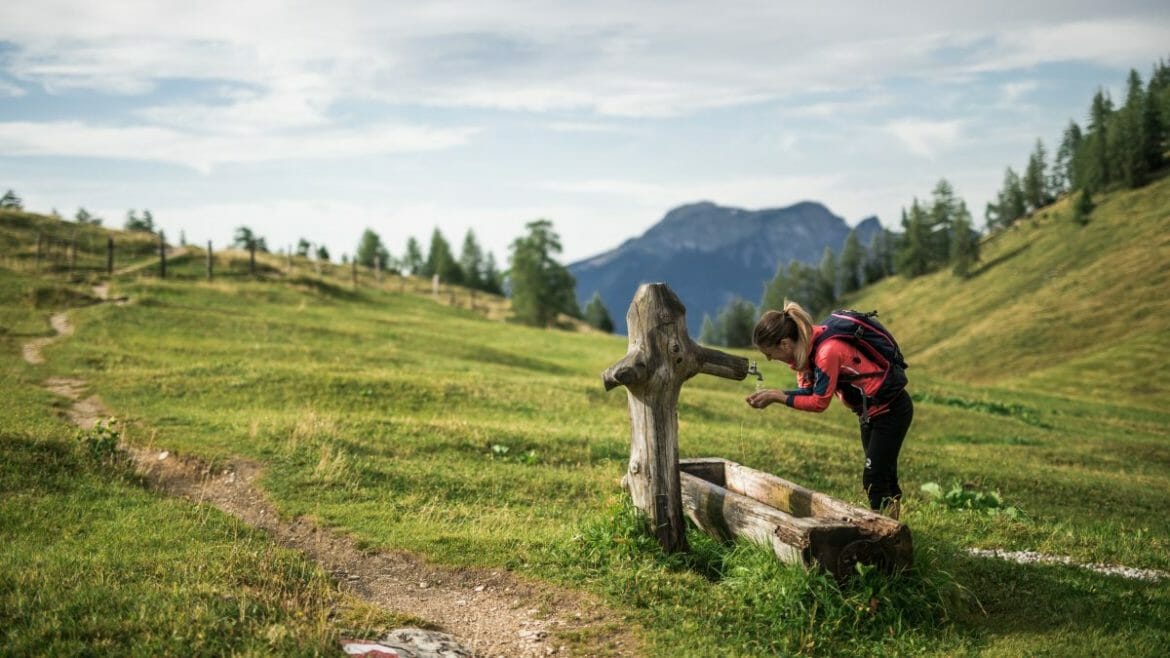
© SalzburgerLand Tourismus Michael Groessinger – Hiking on the Postalm
#10 Falconers and their birds of prey at Hohenwerfen Castle
Falconry – hunting for small game such as hares or pheasants with the help of birds of prey – looks back on a long tradition in the Prince-Archbishopric of Salzburg. Today this hunting method is practised only rarely in Austria but has been classed an “Intangible Heritage” by UNESCO. The spectacular falconry displays by the historic regional falconry centre in Hohenwerfen (known as an “adventure castle” ) show how clever and intelligent the birds are. Around thirty animals – including falcons, hawks, and kites – live and work together with their falconers on the mountain. The wellbeing of the birds comes first, and the birds of prey shows are considered the best and most spectacular in Austria.
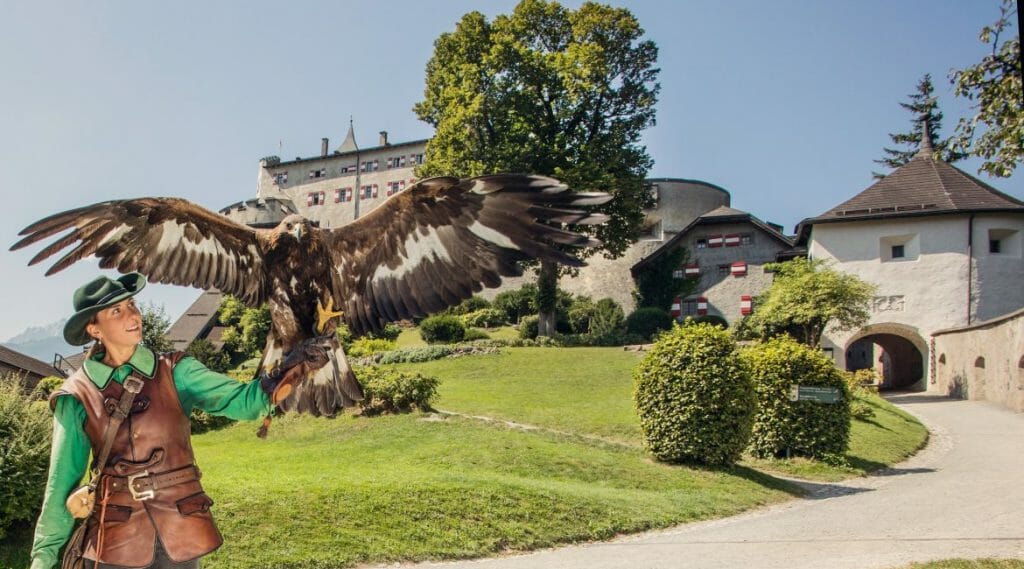
© SalzburgerLand Tourismus, Eva trifft. – Hohenwerfen Castle flight show
In SalzburgerLand, we know everything about what makes our homeland special. We would like to share this wealth of knowledge with you. Our hosts would also love to offer further insider tips for your extraordinary dream holiday – because we live for that!




